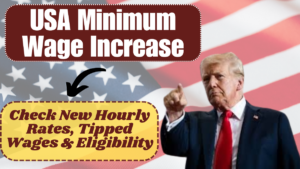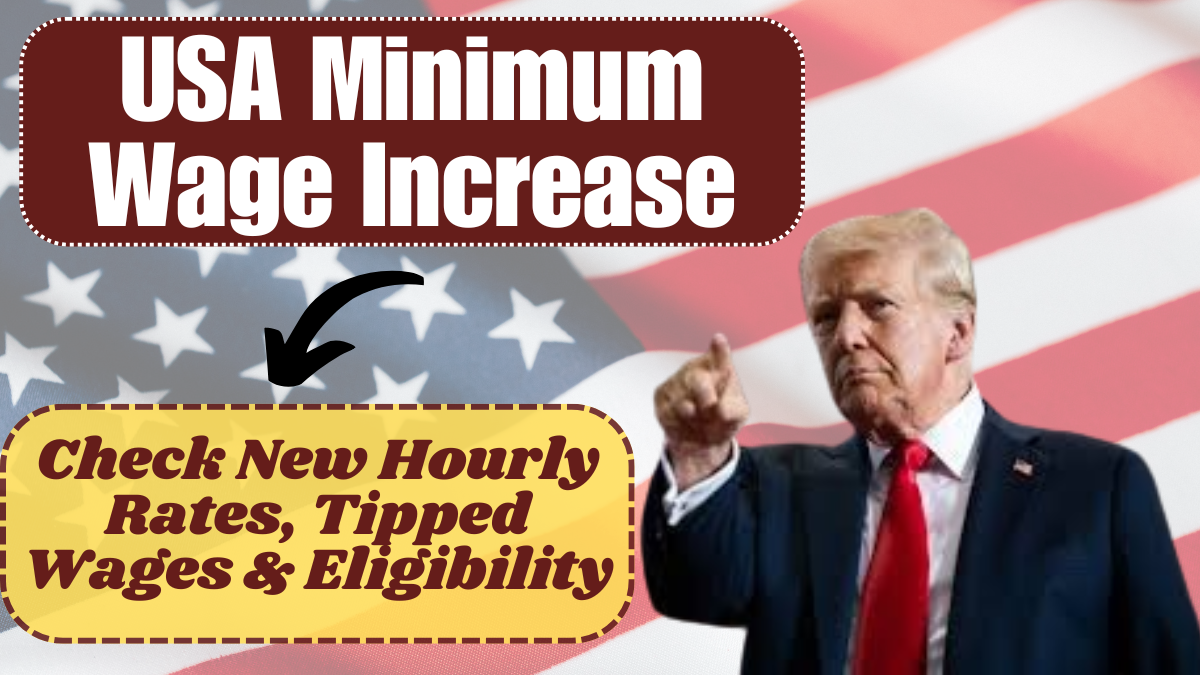The USA minimum wage increase in 2025 is a major update that impacts millions of workers nationwide. While the federal minimum wage remains at $7.25/hour, many states and cities have implemented higher minimum wage laws to address inflation and cost-of-living concerns. If you’re an employee or an employer, staying informed about these new rates is essential to stay compliant and ensure fair pay practices.
This article breaks down updated wage rates, state-by-state changes, tipped employee rules, and who is eligible to benefit from these changes in 2025.

Understanding Minimum Wage Laws in the U.S.
Minimum wage refers to the lowest hourly pay an employer can legally offer. Although the federal baseline is $7.25/hour, state and local governments can set higher rates. In fact, many areas have already adopted wage increases to reflect the rising cost of living.
Changes in 2025 are being led by states like California, Washington, Florida, and New York, with some fast-food and tipped employees seeing major pay improvements.
USA Minimum Wage 2025: State-by-State Overview
| State | New Minimum Wage (2025) | Tipped Minimum Wage | Notable Changes |
|---|---|---|---|
| California | $16.50 | No tip credit | Fast-food workers now earn $20.70/hour |
| Washington | $16.66 | No tip credit | CPI-based automatic wage adjustments |
| New York | $16.50 (NYC/LI/WC) | $11.00 (food service) | Increases tied to inflation |
| Connecticut | $16.35 | $6.38 (FS), $8.23 (bar) | Gradual yearly hikes continue |
| Florida | $14.00 (from Sep 30) | $11.00 | Set to rise to $15/hour by 2026 |
| Illinois | $15.00 | $9.00 | Final step of planned increases |
| Arizona | $14.70 | $11.70 | Adjusted with cost-of-living index |
| Ohio | $10.70 | $5.35 | Adjusted annually for inflation |
Who Sets These Minimum Wage Rates?
- Federal Government: Sets the national minimum wage floor.
- State Governments: Can raise wages above the federal level.
- Local Governments: Cities and counties may enforce higher rates for local workers.
Who Is Eligible for the 2025 Minimum Wage?
While many workers will benefit, some categories are treated differently based on state laws:
- Tipped Workers: Restaurant servers, bartenders, and other tipped employees often earn a base rate below the full minimum wage, but total earnings (including tips) must meet or exceed the full minimum.
- Younger Employees: Workers under 20 may be paid a youth training wage for their first 90 days.
- Small Business Workers: Some states allow lower rates for businesses with fewer than 25 employees.
- Agricultural & Seasonal Workers: May be exempt or have separate wage standards.
MUST READ: California Minimum Wage 2025: $16.50 Statewide Hike and What It Means for Workers
Impact on Employees
- Higher Wages: More money per paycheck to cover essentials like food, housing, and transport.
- Improved Living Standards: Greater ability to manage inflation and rising prices.
- Tipped Employees: Will still need to track total earnings to ensure compliance with minimum wage laws.
Impact on Employers
- Rising Payroll Costs: Especially for businesses with hourly staff.
- Increased Compliance Responsibility: Legal obligations must be met to avoid penalties.
- Retention and Talent Attraction: Competitive wages can improve hiring and reduce turnover.
Final Thoughts
The 2025 minimum wage increases mark an important step toward income fairness across the U.S. Even though the federal rate remains stagnant, states and cities are taking matters into their own hands to protect workers. Employers should start updating payroll systems and educating HR teams to ensure compliance ahead of these changes.
Whether you’re a worker verifying your wage or an employer ensuring compliance, understanding your rights and responsibilities will be key to navigating the new wage landscape in March and April 2025.
Click here to know more.
Aanchal is a passionate writer with a keen interest in storytelling, content creation, and creative expression. She enjoys exploring diverse topics and crafting engaging narratives that captivate readers.

